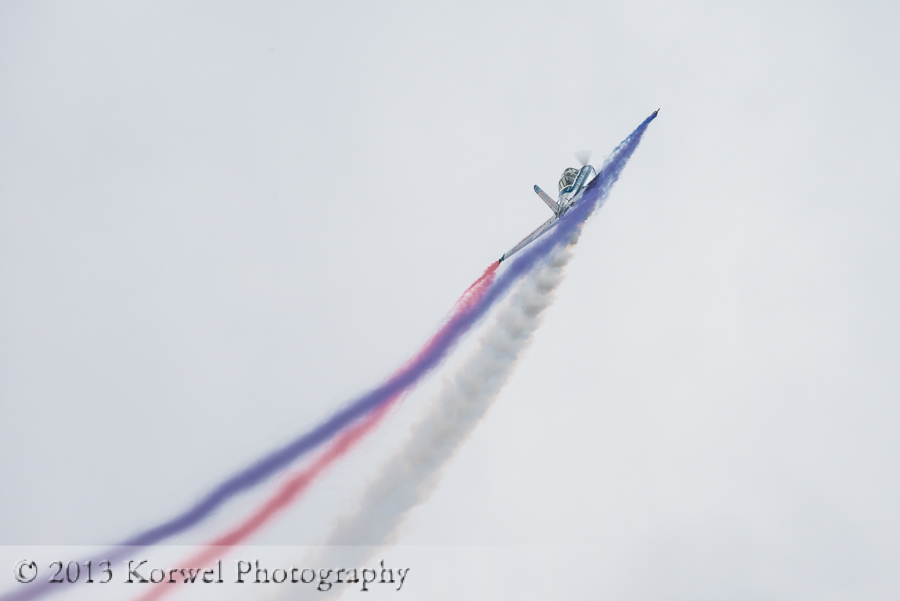“Critical sharpness” and airplanes
David DuChemin used to say:
If the best thing someone can say about my work is that it’s tack sharp, then I’ve probably failed.
David DuChemin
While there is a ring of truth in this saying, when I came back from Quad Cities Air Show few weeks ago, I could not disagree more. There is something to say for having a bunch of technically well executed images, particularly tack sharp, after a long day of shooting. It was not the case this time. Few images were OK to post to blog, and there was hardly any passing the 100% zoom inspection. What a disappointment.
Shooting airplanes, it is a hit and miss for me, unfortunately. Even in great middle of the day light, you need to use slower shutter speed of 1/250 sec or less, to show the movement of prop, making an airplane look alive. Well, add that to panning fast moving aircraft with zoom lens extended as far as it will go, and the images are not-so-sharp anymore, assuming you can even control the autofocus. And that’s where I think the problem lays.
I understand the basics of auto focus setting in my camera. I use back button for focusing, for a long time, and find it very useful. I get the difference between single vs continuous, that’s easy. And that’s probably about it. Reading recently Martin’s Baily “Sharp Shooter” e-book, devoted solely to tricks and techniques for focusing, sharpening and alike, I was stunned to discover settings like Tracking sensitivity or Acceleration/Deceleration tracking settings. Cannot even find it in my camera, maybe it is just a Canon thing? High time to discover the difference between 9, 21 and 51 focus point, the auto and 3D. And how to use them to actually get better images.
Meantime, enjoy colorful smoke behind Julie Clark’s Beech. What a beautiful performance it was…
